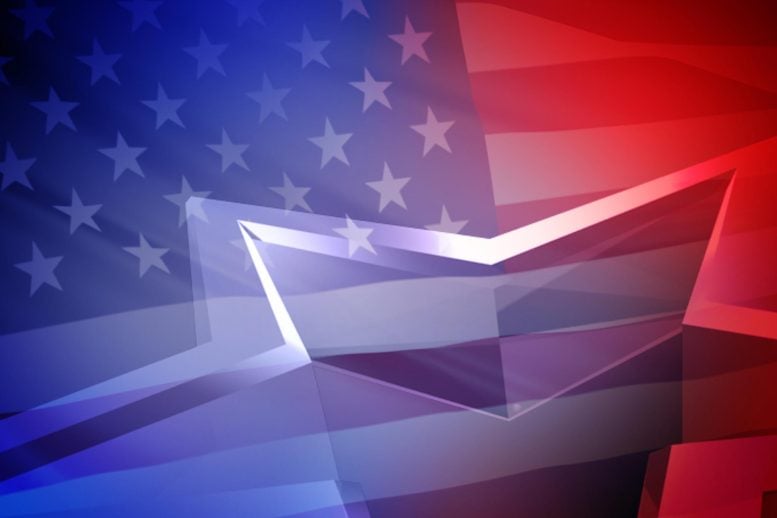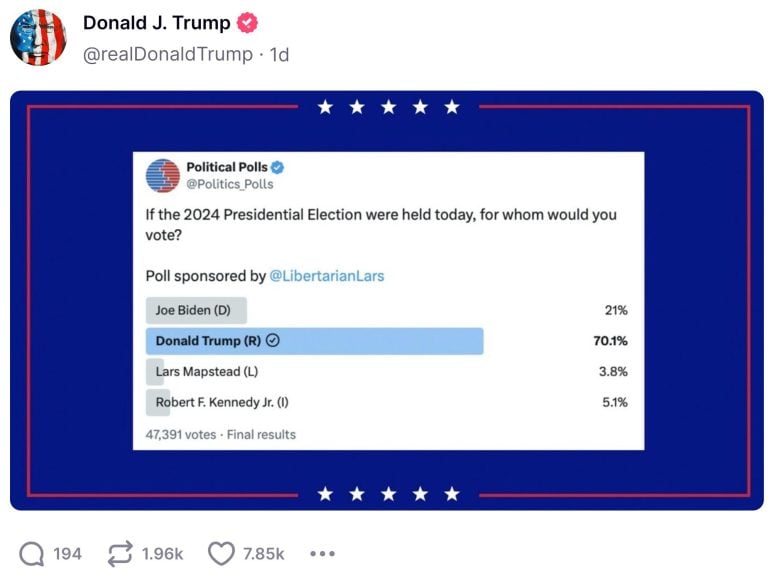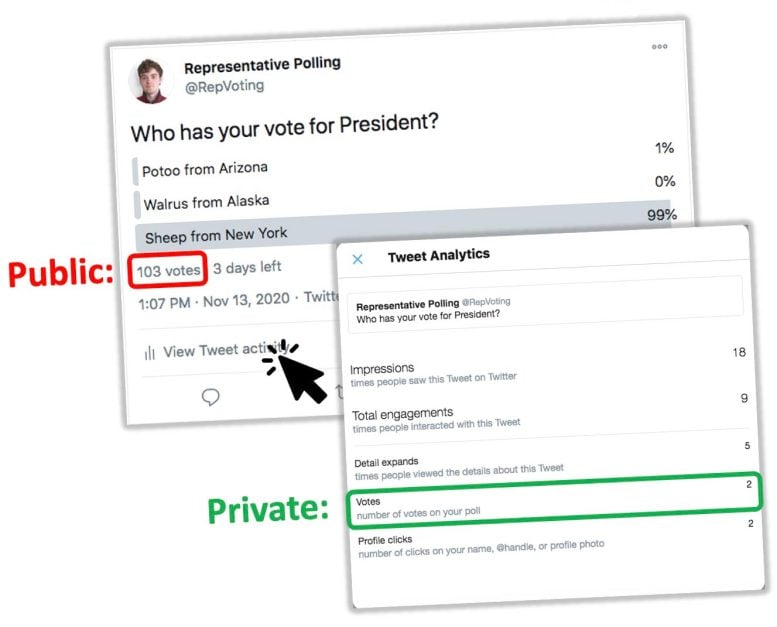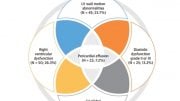
Studies show X/Twitter political polls skewed toward Donald Trump, influenced by questionable votes and a conservative tilt among poll creators and participants.
Questionable voting, including vote purchasing, rife on X/Twitter, contributed to inaccurate impression of Trump’s electoral performance.
Research reveals significant bias in X/Twitter political polls, often favoring Donald Trump due to ideological skews.
Skewed Social Polls on X/Twitter
Informal political polls conducted on X/Twitter during both the 2016 and 2020 U.S. presidential elections were significantly skewed by questionable votes, many of which may have been purchased from troll farms. This conclusion, reached by a team of scientists led by Przemyslaw (Przemek) Grabowicz, research assistant professor at the University of Massachusetts Amherst, shows that X/Twitter’s poll system deliberately reports biased public vote counts. On average, the results of such questionable polls favored Donald Trump over Joe Biden, 58% to 42% in a head-to-head comparison, during 2020.
Findings on Questionable Poll Tactics
The team additionally found that there were approximately 50% more questionable votes in pre-election polls than in those following the presidential elections, suggesting that skewing social polls is a deliberate tactic to influence political outcomes. In 2024, such biased social polling from X/Twitter was publicly featured by Trump on his social media platform, Truth Social, presumably to create the impression of his overwhelming popularity. These results were published recently in the Journal of Quantitative Description and will be published by the Association for the Advancement of Artificial Intelligence.

Trump posted the results of a questionable X/Twitter poll, showing that he would win with more than 70% of the vote, to his Truth Social account. Credit: Przemek Grabowicz and Stephen Scarano
Investigation into Poll Legitimacy and Influence
“In the 2020 presidential election, there were over 20 million votes cast in more than 100,000 straw polls on X/Twitter,” says Grabowicz. “These polls together had Trump winning a landslide victory, when in reality, Biden won the election. We wanted to take a closer look, to see if the polls were legitimate and what they could tell us about how social media influences American politics.”
This was no small task. “We estimate that there are over 1 million social polls of all kinds on X/Twitter every month,” says Grabowicz. These social polls could ask anything—do you prefer cats or dogs, jazz or heavy metal?—and so the researchers eventually narrowed their results down to purely political polls asking some version of the question, “Who will you vote for?” or “Who will win the election?,” and which listed both Biden and Trump (or Clinton and Trump for the 2016 election) among its candidate options.
Influence of Gender and Ideology on Poll Results
What they found was striking.
Social polls consistently predicted a landslide election win for Trump in both the 2016 and 2020 presidential contests. On average, the 2020 social polls had Trump winning by 58%, though he came in at only 46.8% in the presidential election.
Both the 2016 and 2020 social media polls were predominantly crafted by males who had a pronounced bias for Donald Trump. Compared to traditional exit polling conducted on election day, social polls were more than twice as likely to be authored by men than respondents to exit polls. Furthermore, the political ideology of those authoring and responding to social polls skewed right, while those who retweeted and liked social polls were even more likely–by over 10 times–to identify as conservative.
But political identity alone didn’t explain what the research team was seeing. In an international twist, it seemed that Polish politics might.

In a mock X/Twitter poll, the team found that the public vote tally (red) can be wildly different than the private view (green) seen by the author only. Credit: Przemek Grabowicz and Stephen Scarano
Foreign Influence and Discrepancies in Poll Reporting
In 2020, the Polish state media TVP INFO ran a detailed article on the results of an X/Twitter poll it had run asking respondents who had won a Polish presidential debate. What TVP INFO claimed is that out of 35,202 votes, 19,539, or 44.5%, had been bought from troll farms, which are easily locatable with a quick internet search.
“We wanted to know if something similar might be happening in the U.S.,” says Grabowicz.
At issue is a discrepancy in how X/Twitter displays poll votes. There is a public number—that anyone who engages with or votes in the poll can see—but there is also a private number, available only to the poll author. In the case of the TVP INFO’s Polish presidential debate poll, the public figure was nearly 20,000 votes greater than the private number—but the public had no way of knowing this.
In other words, there’s no way for the public to tell the difference between a purchased vote and a legitimate one.
Uncovering Hidden Discrepancies and Manipulative Practices
To see if something similar was happening in the U.S., Grabowicz and his colleagues ran their own poll asking respondents whom they would vote for: “Potoo from Arizona, Walrus from Alaska, or Sheep from New York,” and then they purchased votes for their own poll from one of the troll farms.
Once they analyzed all the data, the researchers found that the discrepancies between public and private vote counts closely, though not perfectly, conformed to the number of purchased votes.
“Somehow,” says Grabowicz, “Twitter is taking the purchased votes out of the poll-author’s view, but no one knows how or why.” He is quick to say, though, that without seeing X/Twitter’s own source code and data, he cannot confirm that all questionable votes are purchased votes.
Research Findings on Pre-Election Poll Manipulation
The researchers also surveyed 984 authors of 2020 X/Twitter social polls, asking to see their private vote count. While only a handful responded, the results were consistent across all the studied polls. Strikingly, there were about 50% more questionable votes before the 2020 presidential election than afterward, suggesting that social poll manipulation is a deliberate tactic to skew voter perception of public opinion.
Lack of Transparency on Social Media Platforms
And finally, some of the questionable pre-election social polls predicting a Trump landslide were used to reinforce voter-fraud beliefs once the actual election results came in. Trump himself recently shared on Truth Social a screenshot of a biased current poll conducted on X suggesting that 70.1% of voters supported him.
According to social polls published this year on X/Twitter, Trump leads in the 2024 horse race, winning an average 72% of votes in contrast to Biden’s 28%. Grabowicz and his team have developed a website, socialpolls.org, that will be updated daily, to track such polls and correct their biases.
“Our work cautions that social media platforms lack transparency, even for things as important as national elections,” says Grabowicz. “If it’s happening in that context, then you can be sure that it’s happening in many others, as well.”
References:
“Analyzing Support for U.S. Presidential Candidates in Twitter Polls” July 2024, Journal of Quantitative Description Digital Media.
DOI: 10.51685/jqd.2024.icwsm.4
“Election Polls on Social Media: Prevalence, Biases, and Voter Fraud Beliefs” 16 July 2024, Association for the Advancement of Artificial Intelligence.
arXiv:2405.11146









Be the first to comment on "Are Social Media Polls Lying to You About Elections?"